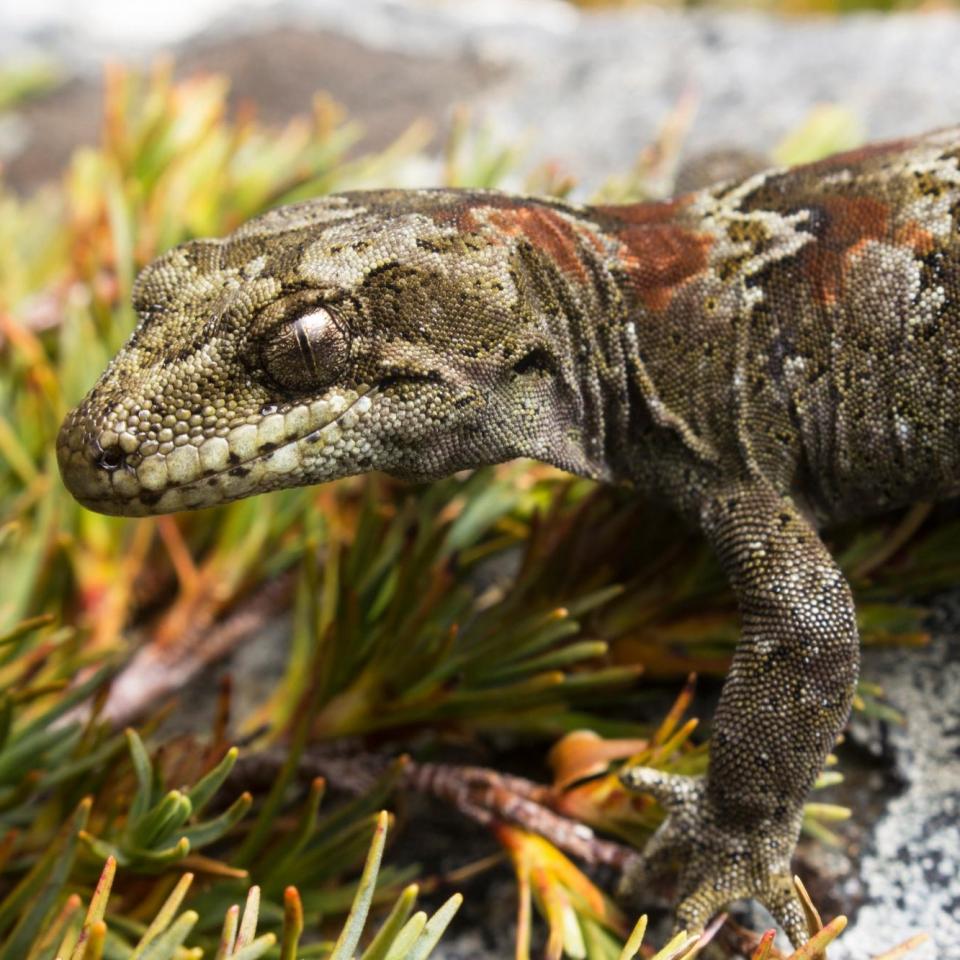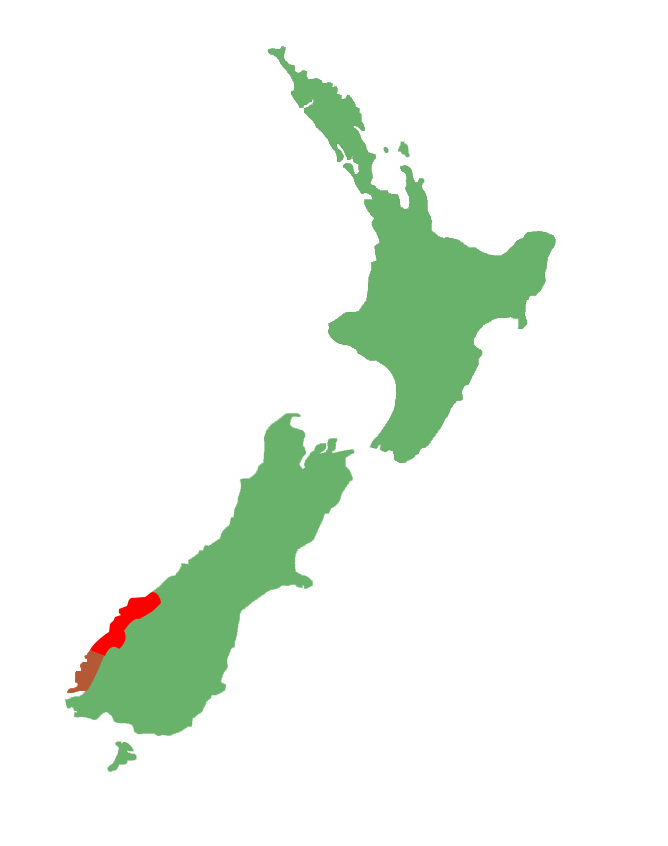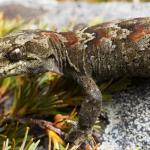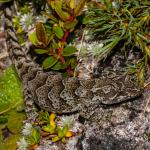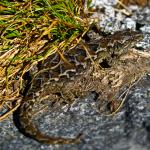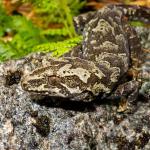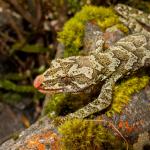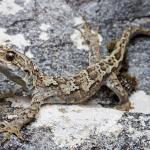- Home
- Herpetofauna Index
- Native
- Mokopirirakau "Cascades"
Mokopirirakau "Cascades"
Cascade gecko
Mokopirirakau "Cascades"
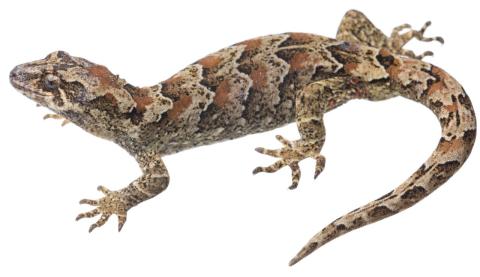
Length: SVL up to 95mm, with the tail being equal to or shorter than the body length
Weight: Unknown
Description
The Cascade gecko is an exquisite gecko species that occupies some of Aotearoa's harshest ecosystems. Cascade geckos typically have a grey, brown, or olive dorsal surface with striking chevrons or blotches. These beautiful markings are often interrupted by orange, orange-brown, red, or mustard blotches. Their ventral surface is usually speckled and sometimes bears irregular stripes. Their mouth interior and tongue is usually bright orange or yellow. Cascade geckos typically have brown or olive-grey eyes.
Life expectancy
Unknown. May be very long lived.
Distribution
Widespread in Northern Fiordland and Southern Westland.
Ecology and habitat
Cascade geckos are cathemeral, terrestrial, and occasionally arboreal (very few records exist from forested ecosystems). They are primarily associated with rocky alpine/sub-alpine habitats (up to 1,700 metres above sea level), where they inhabit sheer rock walls, deep rocky crevices, boulderfield, and open rocky shrublands. Like other cryptic 'alpine' Mokopirirakau geckos, such as the Tākitimu gecko (Mokopirirakau cryptozoicus), Cascade geckos have been recorded in forested ecosystems, however, they are apparently very uncommon, or seldom observed in these ecosystems now (van Winkel et al. 2018).
Social structure
Unknown.
Breeding biology
Very little is known about the reproductive biology of Cascade geckos, but females are thought to breed/reproduced every two or three years.
Diet
Presumably insectivorous and likely feeds on alpine sugar sources such as nectar or fruits.
Disease
Unknown.
Conservation strategy
This species is being monitored using a variety of methods as part of a Department of Conservation alpine reptiles initiative.
Interesting notes
Both their common and TAG names refer to the Cascade Plateau - one of the first areas where this species was found to occur.
Astonishingly, one individual was found by climbers in Fiordland approximately 150 metres up a near-vertical rock wall.
The Cascade gecko, along with its sister taxa (the Open Bay Islands gecko) sit within the western clade of the Mokopirirakau genus, with the broad-cheeked gecko being their closest relative within the group.
References
Jewell, T. (2008). A photographic guide to reptiles and amphibians of New Zealand. Auckland: New Holland.
van Winkel, D., Baling, M., Hitchmough, R. 2018. Reptiles and amphibians of New Zealand – a field guide. Auckland university press, Auckland New Zealand.

